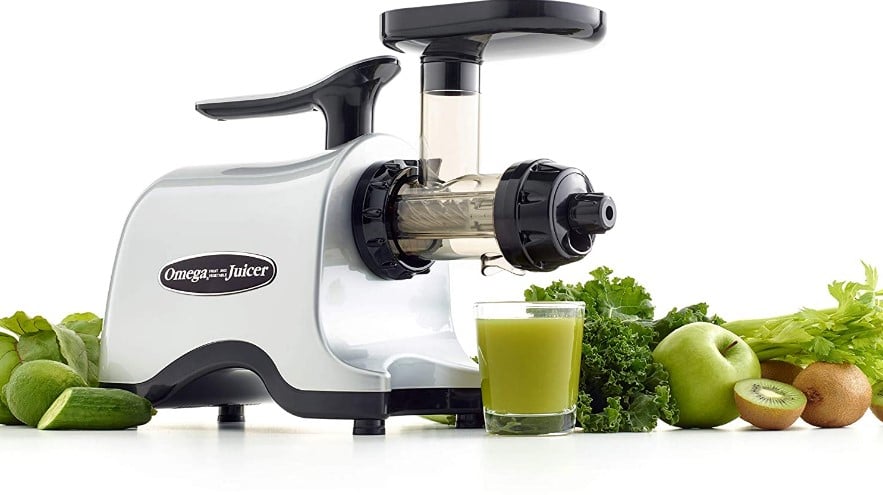How to Clean a Juicer?
From the very beginning, the juicer has changed a lot. In ancient times we used to extract juice with a manual juicer. That was the old-fashioned way of juicing lemon juice. But there are some fruits and vegetables. You cannot extract juice from them in that juicing process. You must use a juicer while extracting juice from apples, carrots, kale, almonds, etc.
However, let’s look through the gradual change in the juicer machine. The picture will be like these. Manual juicer, Hydraulic juicer, Steam juicer, Triturating juicer, Masticating juicer, Centrifugal juicer, Cold press juicer, etc.
It is not a matter of which type of juicer we use. The truth is in the deep cleaning process. Without regular, prompt cleaning, your kitchen appliance may permanently face damage or lose effectiveness. That’s why making your juicer deep clean is an important issue.
The thing that can make you compel to clean your juicer is pulp. It can come while extracting juice. But unfortunately, that pulp can lead to bacterial and mold growth. The good news is that most juicers are easy to clean. Thus you can enlarge the life span of your juicer to get fresh juice.
This blog post will give you tips and tricks for how to clean a juicer in some easy steps!
Contents
Types of Juicers
There are three basic types of modern juicers, and you need to understand how each type works to clean them correctly. There are masticating juicers, centrifugal juicers, and triturating juicers.
Masticating Juicer
When you cut up your produce into small chunks before placing it on the feed tube of a masticating juicer, this will delay oxidation and help produce higher-quality juice. The masticating juicer is the most expensive type today and does a great job extracting juice from wheatgrass, kale, parsley, and other leafy greens.

The main difference between this machine and the others is how it chews up food into tiny pieces that its auger can more easily extract. In addition, it operates at low speeds, so there’s no need for high-pitched noises like with centrifugal or triturating juicers! You’ll also notice how much quieter these machines are than their counterparts.
How to Clean the Juicer – Masticating Juicer Cleaning Process
Cleaning them requires minimal effort because you quick-rinse them off after using hot water and wipe down any removable parts, such as the cone, feed tube, and screen, with a damp microfiber cloth.
Triturating Juicer
The triturating juicer is also masticating. It chews food into tiny pieces to extract juice; however, this machine operates faster than its masticating juicer counterpart. Because of how fast these machines operate, it takes longer for products to ground down, so you’ll need to cut your fruits and vegetables smaller before placing them on the feed tube. You will know if you’ve put too many hard fruits and vegetables, such as carrots or apples, though by how long they take to be ground down (they might not even fit!).

How to Clean the Juicer – Triturating Juicer Cleaning Process
To clean a juicer of this type, all that’s required is wiping off any removable juicer parts like the feed tube, cone, and screen with a damp cloth.
Centrifugal Juicer
The centrifugal juicer is the most common type of machine because it operates at high speeds, meaning hard fruits and vegetables can be cut into small pieces before they are put on the feed tube.
How to Clean the Juicer – Centrifugal Juicer Cleaning Process
This will make cleaning a juicer much quicker, as you’ll only need to rinse off any removable parts in warm water after each use! The downside for this particular type of juicer is how loud it runs, so if noise doesn’t bother you, go ahead and invest in one today!
Regular Cleaning Process
Deep cleaning your juicer is essential to ensure its quality and longevity of how long it lasts. You should clean the juicer after every use; this may vary depending on how often you make a refreshing glass of juice, but generally, do it!
Ingredients You Would Need to Clean a Juicer
- Water (warm)
- Soft cloth or brush
- A brush (nail or toothbrush)
- Baking soda
- Dry rice
- Salt
- Dish soap
- Spatula
Steps to Follow
After each use, you must rinse the machine in hot water and remove any removable juicer parts.
Wipe down any area that’s been wet with a soft cloth, scrubbing gently around edges or seams if needed. Then place dry rice into your empty pulp container for about 20 minutes before cleaning it out using the spatula (you’ll want to ensure there are no leftover grains).
You can also add salt or baking soda to help break up how sticky things get on your juicers! Alternatively, for five minutes, you could soak everything—cups, blades, plastics, and all—in a sink full of hot soapy water before putting them on a drying rack.
You’ll want to make your juicer clean this way at least once a week, if not more.
Removing Tough Residue
If you’ve used your juicer often and notice a bunch of harsh residues that won’t come off, soak everything in warm soapy water for 15 minutes before scrubbing away with the soft brush or nail brush.
Ingredients You Would Need to Remove Harsh Residues
- Dish liquid
- White Vinegar
- Baking Soda
- Milk
- A cup
- A sprayer
- Edible Salt
Steps to Follow
To remove tough stains from your juicer, soak all the juicer machine parts in a bowl of warm soapy water with enzyme dish liquid for 15 minutes.
Then you’ll want to scrub away at the residues using a soft brush or toothbrush and rinse everything off before rinsing it again under running tap water. After that, fill your spray bottle with white vinegar and spray it all over the juicer before rinsing everything off in warm water.
If that doesn’t work, use a solution of half milk and one teaspoon salt as another alternative!
A scrubber is usually unnecessary because plastic components can be wiped clean with a cloth or sponge. However, how dirty a juicer machine has gotten might require how the blade spins to be removed and brushed off with water.
When all the parts are dry, you can store them in a cool place until subsequent use! If your machine has no removable parts, leave it on your countertop or cupboard when unused!
How to Clean A Juicer: Additional Tips and Tricks
You will need these additional tips and tricks to learn how to clean a juicer:
- But first, unplug the juicer machine before you clean it.
- Start by thoroughly rinsing off your juicer under running water. This will help remove any dirt from previous juice or other food items. Rinse until all traces of anything are removed, then air dry completely with a paper towel if desired.
- If gunk is stuck on the juicer’s blades, use an old toothbrush dipped in vinegar to scrub away any remaining residue.
- Use dish soap and hot water to wash down all the parts inside the juicer carefully while not getting too much liquid into compartmentalized areas. This can cause mold growth which will become difficult for anyone but experts to remove later. Once again, rinse with cold water from the faucet.
- If you are a juicing enthusiast, cleaning your machine at least once per month is recommended. If not more often than that!
- For people who have difficulty cleaning their juicer adequately after each use, try soaking everything overnight with dish soap before scrubbing away.
- You’ll need a soft brush, scrubber, nail brush, or toothbrush.
- Add water with baking soda or salt to the empty pulp container for about 20 minutes before cleaning out using a spatula (you can also add mild dish soap).
- Regular cleaning should be done at least once weekly; if you notice harsh residues that won’t come off, soak everything in warm soapy water for 15 minutes before scrubbing away with a soft brush.
- Juicers that are used often can be very hard to clean. So while buying a juicer machine, look for the Best Easy to Clean Juicers.
Read More: Best Easy to Clean Juicers: Reviews & Buying Guide
- It’s always better to clean the juicer immediately after juicing. It is easier to clean up fresh residues of fruits and vegetables while it is still wet.
- An added benefit of soaking the residue in alcohol, such as vodka, will soften or remove it.
- You can also use vinegar to remove how sticky things get on your juicer.
- Soaking metal parts of your juicer for a longer period will oxidize the metal parts of the juicer. (not for the plastic parts)
- Regular cleaning of your juicer is vital to ensure how long it lasts.
- The more you juice, the more often you should clean out your machine so that its efficiency doesn’t decrease and there’s less chance for bacteria growth or spoilage.
- If you forget to clean the juicer for some reason, then make sure to soak the juicer in hot soapy water, scrubbing away with a soft brush.
- Epsom salt can also be added to help break up how sticky things get on your juicers!
- Avoid washing the base of your juicer in water.
- It’s always better to consult the cleaning instructions before placing juicer parts in a dishwasher (check if they are safe!).
Conclusion
With these tips and tricks, you’ll be juicing in no time. If you have any additional questions about how to clean your juicer or want help with the process, please don’t hesitate to reach out.
Please share this blog post with your friends if you’ve found this blog post helpful! We would love to hear about any tips or tricks that we missed. There is nothing better than a clean juicer.
Thank you for reading, and happy juicing!



















